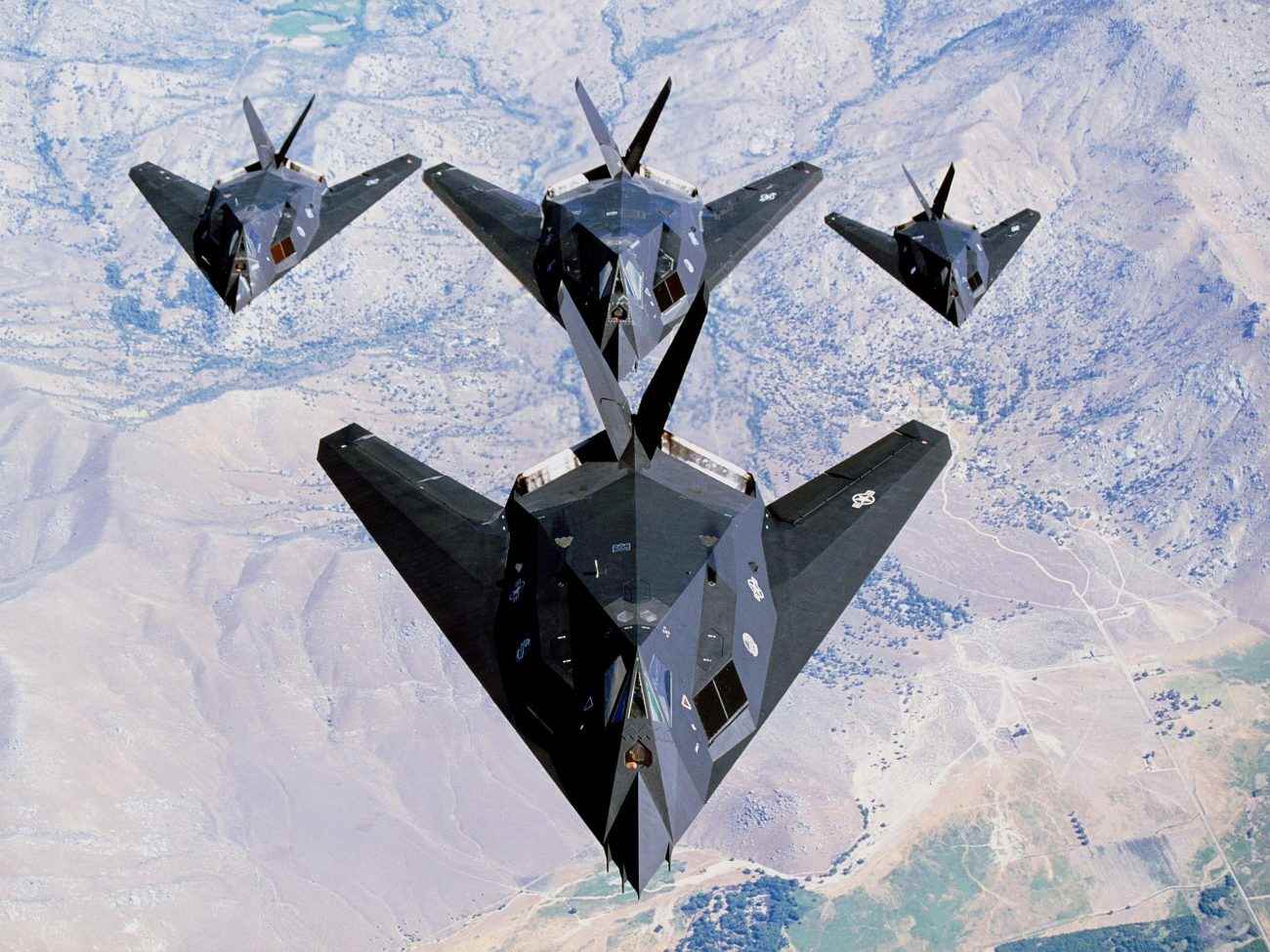The unique design of the US F-117 Nighthawk, the world’s first operational stealth aircraft, has been widely discussed by aerospace analysts over the years.
A report by GE blog describes the Nighthawk’s features and says the aircraft looks less potent when viewed alongside other advanced American fighters.
There are no afterburners on the aircraft. Without the assistance of an onboard computer, the aircraft is unstable on all three flight axes. There are no curved surfaces, and even the payload is limited for an aircraft primarily designed for bombing missions.
Apart from these shortcomings, the report published earlier this year by General Electric also lists a positive aspect: the aircraft is practically invisible to enemy radar.
It was the first-ever stealth aircraft to see the light of the day during the Cold War era and was powered by a pre-existing engine modified to suit the requirement, according to the engine’s manufacturer, General Electric.
Despite the US having a technological advantage over its opponents during the Cold War, contested airspace posed a substantial threat to pilots and their aircraft. Developing enemy technology could allow the enemy’s air force to lock on to American fighter jets and shoot them down at an alarming rate.
Even though the F-117 Nighthawk is known to be a Lockheed Martin product, the engine that could power a stealth fighter came from GE. The F404 engine, created exclusively for the F/A-18 Hornet by GE, quickly became a fascinating alternative for the F-117, a top-secret aircraft in need of an engine.
The engine was almost identical to the F/F404 A-18’s variant. GE constructed roughly 100 of these engines on a separate assembly line with only government-approved workers. That engine soon earned its stripes by being dependable, maintainable, lightweight, and inexpensive.
‘Nighthawk’ Still Lives On
The F-117 Nighthawk, the world’s first operational stealth fighter plane, was retired by the US Air Force in 2008. According to accounts, the “black jets” were seen in operation above the Nevada desert during the “Red Flag” air warfare practice, as previously reported by the EurAsian Times.
The F-117s are reportedly used as developmental and “red air” training platforms a decade after their alleged retirement. Certain aircraft act as aggressors in air-to-air combat during red-air training.
This raised many eyebrows because it was unlikely for an archaic aircraft that retired a decade ago to resurface again and participate in war games. The Nighthawk’s resurgence until then was essentially kept a secret.
However, in September, the US Air Force revealed that the F-117 Nighthawk had been resurrected. The retired aircraft made an unexpected visit to the 114th Fighter Wing’s base. On the airframes of these Nighthawks, no radar reflectors were visible.
Later, the public affairs section of the 144th Fighter Wing confirmed the development. It was stated that the F-117 Nighthawks would be arriving soon and training alongside the USAF’s F-15C/D Eagle fighters.
It has been speculated that these aircraft have been brought back to life owing to their stealth characteristics. It is believed that the USAF needs to train its fighter pilots against the adversary stealth fighters, the Russian Su-57 and the Chinese J-20, as well as cruise missiles.
As a result, pilots (including F-15 pilots attached to the 114th) may be able to better find and intercept stealth aircraft in future operations and counter enemy cruise missiles if they train against F-117 Nighthawks as part of an advanced program.
The GE Engine
When the US came up with a plan to develop the F-117 Nighthawk, the main challenge was reducing the radar cross-section or the electromagnetic signatures of the aircraft.
A subsonic flight was required to reduce obnoxious sonic booms. No afterburners or huge exhaust plumes from engines with infrared signatures were allowed. It referred to flat surfaces that reflected radar radiation. The result was an otherworldly-looking black jet that the US government did not recognize until 1988.
Despite the F404’s ability to fly at supersonic speeds, as proved by the Hornet, the Nighthawk was limited to subsonic speeds because the afterburners that were required to breach the sound barrier would compromise the aircraft’s stealth.
GE engineers designed the F-117’s unusual exhaust to scatter the engine’s hot air and elude radar and heat-seeking missiles.

“Really, it was the beauty of it. They were able to modify an existing engine, the F404, to provide the required thrust and weight. Minor adjustments were made to meet the F-117’s unique intake, and F404-F1D2 was ready to power the stealth attack aircraft,” said Bill Formosi, a former project manager of the F1D2 program.
Unlike other planes of the period, the F-117’s air intakes were grilled and coated with a unique radar-absorbent coating. Spring-loaded doors also opened on the ground to allow additional air into the engine. However, once in flight, the hatches would be closed again to maintain the aircraft’s stealth.
According to Formosi, the tailpipe was the truly distinctive feature of the engine.
“If you look at an F-117 from behind, you’ll notice that the engines aren’t visible like they are in other aircraft,” he said. “It was done on purpose, and it had everything to do with keeping it quiet. There was a 12-stage tailpipe that went from circular at the engine’s end to flat at the end of the exhaust, rather than an afterburner as the F404 had on the F/A-18.”
“This was done to spread the hot exhaust air over a larger region, reducing its heat signature,” according to Formosi.
This is probably why the F-117 Nighthawk commissioned 40 years ago and retired about a decade back has staged a comeback. The world’s first stealth aircraft in America’s inventory is still relevant and thriving in ways that will become clearer once the US Air Force reveals the full operational utility of the aircraft.
From what the world knows, it was a marvel created by Lockheed and powered by GE.
- Contact the author at sakshi.tiwari9555@gmail.com
- Follow EurAsian Times on Google News
- Article Republished With Modifications




